A Stener lesion is where the ulnar collateral ligament completely tears and “folds back” upon itself. It is held in this position by the broad tendon of the Adductor Pollicus muscle.
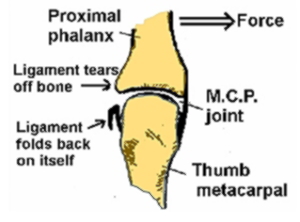
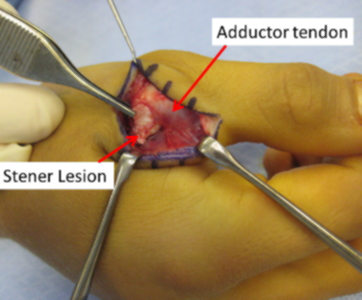
At the time of injury the thumb deviates away from the fingers and the ligament tears off the base of the proximal phalanx.
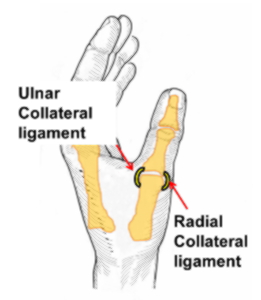
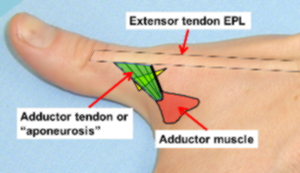
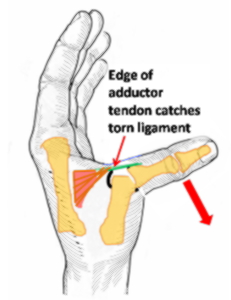
The adductor tendon shifts also at the time of injury and shifts down the thumb . The edge of the tendon “catches” the torn ligament and flips it backwards – upon itself.
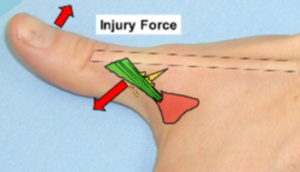
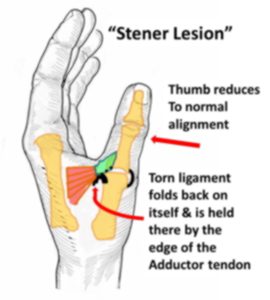
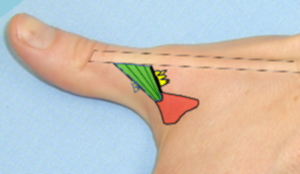
As the thumb returns back to its normal alignment the torn ligament is folded back on itself and held in this position by the overlying tendon. The ligament is therefore no longer in contact with its normal site of attachment at the base of the proximal phalanx.
At operation the Adductor tendon is partly released to reveal the displaced ligament underneath.
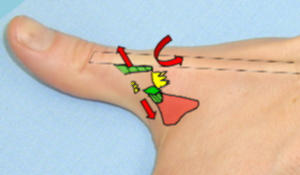
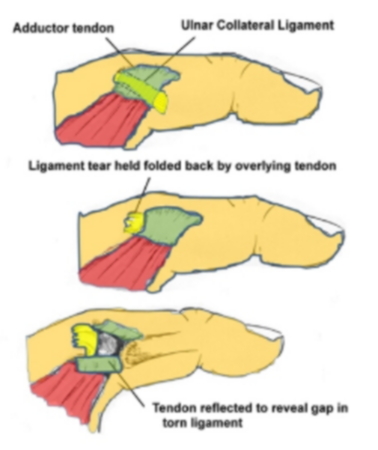
Even with prolonged splintage the ligament will not heal. The thumb ends up unstable without surgery.
Both components of the collateral ligaments of the thumb must be completely ruptured ( Proper (PCL) & Accessory (ACL) components) for a Stener lesion to occur.
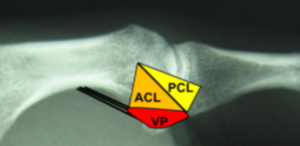
The incidence of Stener lesions in complete ruptures is highly variable in the reported literature but may occur in up to 80% of complete ruptures.
The Xray may be normal but if a fragment of bone is pulled off at the time of injury then the xray will reveal wide displacement of the fragment.
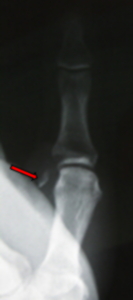
An MRI Scan will show the Stener lesion but is not critical to make the diagnosis.
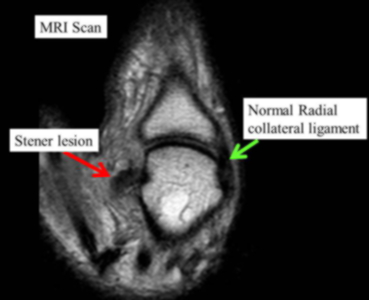
The following are NOT examples of Stener lesions. Just because there is a fracture that is rotated does NOT mean that it is a Stener lesion. The problem with the following patterns of injury is usually not instability but rather ongoing irritability in the joint due irregularity of the joint surface.
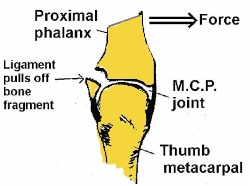
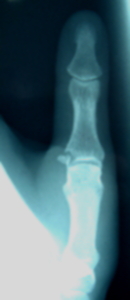
Not a Stener Lesion Not a Stener Lesion
LAST UPDATED ON 14 / 4 / 2015
